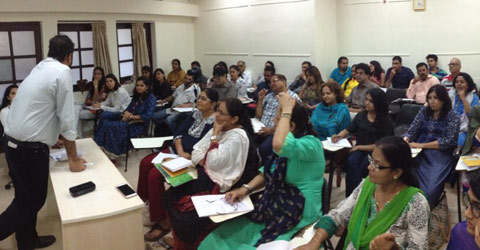The ancient science of handwriting analysis is based within neuroscience, linguistics, and psychoanalysis, but still remains in need of being applied aptly within the clinic and in academic research.
Jacques Derrida may have been pleased to know that the central question he posed on the act of writing in his 1966 book, Of Grammatology, was one that would find its answer in an ancient science that was also struggling to be revived during the 20th century.
The science, which is called graphology or handwriting analysis is one that may also have deeper roots in several other sciences, including that of palaeography, the formal linguistic discipline to study the historical evolution of written scripts. But today, graphology, like several other alternate sciences, is a buzzing new area of research and practice within psychological and cognitive testing.
Neurology
“Graphology has its base in several neurosciences,” explains Chetna Teckchandani, who works as an independent graphologist and management consultant hosting handwriting analysis workshops and events for corporate houses as well as for individuals. Like all psychological practices, “there are two aspects to its practice: the first being analysis and the other being therapy. We take handwriting samples and then study them threadbare to understand several facets of one’s personality,” she explains.
Later, the person has the choice to undertake grapho-therapy, which involves a set of exercises to correct certain wrong patterns of thinking through an implementation of changes in their writing strokes,” she says. “We often find that we are able to understand a lot about a person entirely from the mental graphs they represent through their handwriting. However it is often strikingly different from the personality they portray.”
Teckchandani says that what handwriting and graphology reveal about a person is unconscious, something that goes beyond social appearances. “This is the reason it is useful for human resource departments at companies. We often help companies make hiring decisions with the help of handwriting analysis. We even have people come to us directly for career guidance,” she adds.
Psychoanalytical and relational scope
But Teckchandani clarifies that not every analyst is competent in undertaking therapeutic exercises, even if they are able to analyse. One therefore needs to be wary, and there emerges a need for practitioners who are sufficiently trained. “The problem is that the science is not still fully understood, or even accepted and acknowledged, despite its historical roots,” says Naviin Thantrii, who is a trained graphologist and grapho therapist. He has also trained several others in graphology and founded the Global Institute of Alternative Science in Mumbai.
 Naviin Thantrii conducting a graphology workshop
Naviin Thantrii conducting a graphology workshop
Thantrii and Teckchandani say there are a large number of people who approach them for relationship guidance. “One of the most striking tendencies I have observed in people at the workplace is the inability to balance their sense of self with the way they should adjust and relate to other people. They are often unsure about how to stand up for who they are, while simultaneously making the right adjustments with people around them,” Teckchandani adds
Graphological strokes can also reveal about the health and physical well-being of a person. As she and Thantrii explain, the strokes that a person uses on paper while writing or sketching, reflects the unconscious signals of thought and cognitive patterns in the neural pathways in the brain. While the signature is considered to be the most defining factor to the person’s identity, graphology (like all classical Freudian psychoanalysis) is based on a relative understanding of the mother influence and father influence. “The mother and father influence on a person’s mind is foundational. Handwriting can reveal the way these influences have affected the person’s thinking very accurately,” says Teckchandani.
Dr. Nidhi Prakash, who teaches psychology at the University of Delhi admits that it can be used effectively during therapy, diagnosis and psychological testing. “Its practice may fall under a series of cognitive behavioural therapies (CBT), which use projective techniques such as drawing and sketching or writing in order to understand the mental associations that a person is making,” she says.
Prakash further details how this may also be effective in curing learning disabilities. “There are people with learning disabilities who are unable to distinguish between alphabets like ‘b’ and ‘d’.” Corrective techniques through graphology and graphotherapy can work in order to cure such dyslexic associations.
History of the science
Thantrii says that graphology emerged in the mid 19th century, along with psychology and other new sciences, later becoming popular around Europe. However, with the end of the World Wars following the isolation of Germany in the early 20th century, many new sciences that were rooted within the Germanic tradition became stigmatised. Graphology was one of these.
It took up until mid 20th century, during the 1960s, for these disciplines to make a comeback, with a renewed Russian and American interest. “Many of these sciences still remain in a nascent state, with more training and education in the field still required,” says Thantrii, who is already in talks with the government for its spread and awareness. “We are in the process of getting it introduced as a proper subject at universities,” says Thantrii, who is currently pursuing a distance (honoris causa) PhD in graphology from the Commonwealth Vocational University, Tonga, in Australia.






